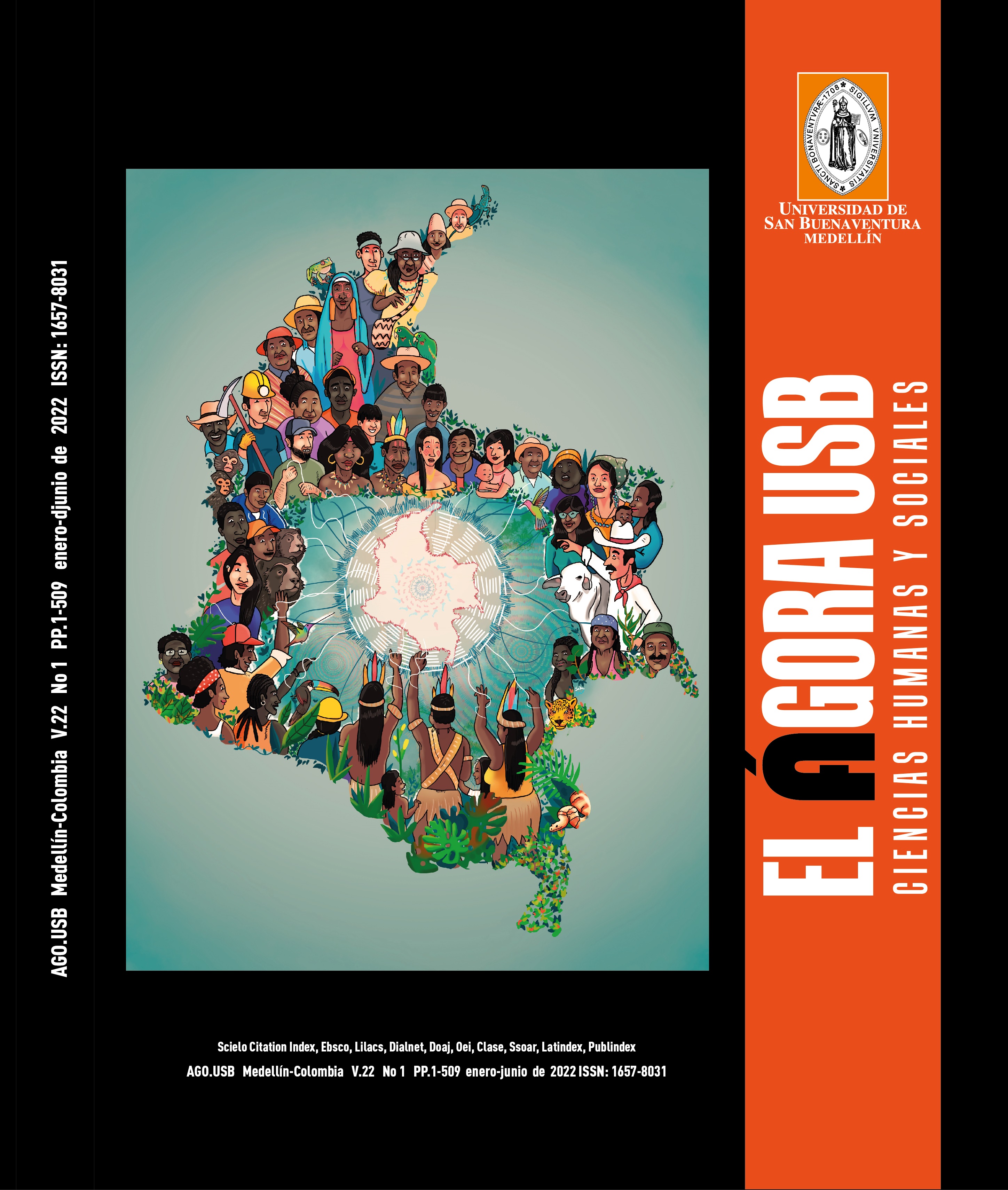The authors are also adhere to the creative commons license 4.0 (https://creativecommons.org/licenses/by-nc-nd/4.0/deed.es)
Attribution - NonCommercial - SinDerivar 4.0 International (CC BY - NC - ND 4.0)
Abstract
When the processes of construction of digital contents are produced with little participation of community, decisions about the meaning go through the interpretation of technical and professional experts, who have another reading of the world and, in some cases, end up in processes of exclusion from the same meaning that is presented. Due to the decision making that arises between a theme and the way it is chosen, a broad participation of communities to create formative contents within the framework of Education for Health (EpS) is presented as a challenge.
References
Broussard, B., Radkins, J., & Compton, M. (2014). Developing Visually Based, Low-Literacy Health Education Tools for African Americans with Psychotic Disorders and Their Families. Community Ment Health. https://doi.org/10.1007/s10597-013-9666-7
Burnett, G. M., Wischgoll, T., Finomore, V., & Calvo, A. (2013). Multimodal Mobile Collaboration Prototype Used in a Find , Fix , and Tag Scenario, 115–128.
Cabero, J. (2003). Las nuevas tecnologías de la información y comunicación como un nuevo espacio para el encuentro entre los pueblos iberoamericanos. Comunicar. https://doi.org/1134-3478
Cabero, J., González, N., Trinidad, A., Ramírez, L., William, T., & Fernández, V. (2014). Manual para el Desarrollo de la Formación Virtual en el Instituto Tecnológico de Santo Domingo. República Dominicana: INTEC.
Chacón, P., & Morote, D. (2017). Avances de la investigación en educación y TIC en aulas hospitalarias Advances of Research in Education and ICT in Hospital Classrooms. Educatio Siglo XXI, 35(3), 65–84. https://doi.org/10.6018/j/308901
Chandler, P., Unsworth, L., Brien, A. O., & Thomas, A. (2011). Student composition of digital animated multimodal narratives : the multimodal grammatical knowledge of students and teachers . Part I : Development of the observational instrument, 1–
17.
Diego, R., Fenández, E., & Badanta, B. (2017). de las TIC para fomentar estilos de vida saludables en niños/as y adolescentes: el caso del sobrepeso. Revista Española de Comunicación en Salud.
Freire, P. (1975). Pedagogía del oprimido. Siglo veintiuno editores.
Freire, P. (1992). Pedagogía de la esperanza: un reencuentro con la pedagogía del oprimido. Siglo veintiuno editores.
Freire, P. (2004). Pedagogía de la autonomía. Saberes necesarios para la práctica educativa (9a ed.). Sao Paulo: Siglo XXI.
González, J. (2018). El enfoque multimodal del proceso de alfabetización. Educação em Revista. Belo Horizonte, 34.
Gubert, F., Lobo, A., Araújo, K., Rodrigues, D., Cunha, N., & Da Costa, P. (2009). Tecnología educativa en el contexto escolar: estrategia para la educación en salud en una escuela pública en Fortaleza-CE. Revista electrónica de Enfermería, 11(1).
Hughes, T., Flatt, J., Fu, B., Butters, M., Chang, C., & Ganguli, M. (2014). Interactive Video Gaming compared to Health Education in Older Adults with MCI: A Feasibility Study. NIH Public Access, 29, 890–898.
Jewitt, C. (2013). Multimodality and digital technologies in the classroom. En I. Saint-Georges & J.-J. Weber (Eds.), Multilingualism and Multimodality: Current Challenges for Educational Studies (pp. 141–152). Sense Publishers.
Jewitt, C., Bezemer, J., & O’Halloran, K. (2016). Introducing Multimodality (Kindle Edi). Taylor & Francis.
Kress, G. (2005). El alfabetismo en la nueva era de los medios de comunicación. Madrid: Ediciones Aljibe.
Kress, Gunther. (2010). Multimodality. A social semiotic approach to contemporary communication. New York, NY: Routledge.
Kress, Gunther. (2013). Recognizing Learning. En Multilingualism and Multimodality: Current Challenges for Educational Studies. Sense Publishers.
Kress, Gunther. (2015). Semiotic work. Applied Linguistics and a social semiotic account of Multimodality. AILA Review, 28, 49–71. https://doi.org/10.1075
Kress, Gunther, Jewitt, C., Ogborn, J., & Tsatsarelis, C. (2014). Multimodal teaching and learning. The rhetorics of the science classroom. London and New York: Bloomsbury Academic.
López, C. (2012). Vista de Pedagogía de la fraternidad en situaciones de riesgo formación integral para la vida. El Ágora, 12(1), 185–197. Recuperado de https://revistas.usb.edu.co/index.php/Agora/article/view/239/108
Mariño, G., & Cendales, L. (2004). Educación no formal y educación popular. Hacia una pedagogía del diálogo cultural. Federación Internacional de Fe y Alegría,.
Mayer, R. (2005). The Cambridge handbook of multimedia learning. (R. Mayer, Ed.). New York, NY: Cambridge University.
O’Halloran, K. L., Tan, S., Wignell, P., Bateman, J. A., Duc-Son, & Pham, M. G. & A. V. M. (2019). Interpreting text and image relations in violent extremist discourse: A mixed methods approach for Big Data Analytics. Terrorism and Political Violence,
31(3), 454–474. https://doi.org/https://doi.org/10.1080/09546553.2016.1233871
Rosas, L., Trujillo, C., Camacho, J., Madrigal, D., & Bradman, A. (2014). Acceptability of health information technology aimed at environmental health education in a prenatal clinic. Patient Education and Counseling, 97, 244–247.
Ryan, J., Scott, A., & Walsh, M. (2010). Pedagogy in the multimodal classroom: an analysis of the challenges and opportunities for teachers. Teachers and Teaching, 16(4), 477–489. https://doi.org/10.1080/13540601003754871
Serna, I. (2017). Retos y desafíos institucionales en asentamientos informales. Estudio de caso de la vereda Granizal del municipio de Bello, Antioquia. Universidad Nacional de Colombia.
Stein, P. (2008). Multimodal Instructional Practices. En Handbook of Research on New Literacies. Taylor & Francis Group.
Tomlinson, M. (2013). Literacy and Music in Early Childhood: Multimodal Learning and Design. SAGE Open. https://doi.org/10.1177/2158244013502498
Valero, M. J., Vázquez, B., & Cassany, D. (2015). Desenredando la web: la lectura crítica de los aprendices de lenguas extranjeras en entornos digitales. Ocnos Revista de Estudios sobre lectura, (13), 7–23. https://doi.org/10.18239
Vera, F. (2014). Impacto de la multimodalidad en la comprensión lectora de textos narrativos en inglés como lengua extranjera (L2) en estudiantes universitarios. Contextos Educativos, (18), 25–41.
Vollum, M. (2014). The potential for social media use in K-12 physical and health education. Computers in Human Behavior, 35.
Walsh, M. (2009). Pedagogic Potentials of Multimodal Literacy. En L. Tan Wee Hin & R. Subramaniam (Eds.), New Media Literacy at the K-12 Level (pp. 32–47). IGI Global.
Walsh, M. (2010). Multimodal literacy: What does it mean for classroom practice? Australian Journal of language and literacy, 33(3), 211–239.




















